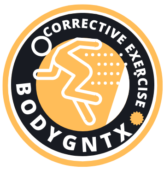Abstract
This study investigated the effects of combined strength and sprint training on muscle activation patterns in 22 participants (15 males and 7 females) aged 20-30 years. Participants performed a strength training protocol consisting of three sets of squats, deadlifts, and bench presses at 70% of their maximum capacity, followed by one set of 10-20-30 sprint training. This combined training regimen was performed three times per week for five weeks. EMG (electromyography) was used to measure muscle activation patterns in the biceps femoris, quadriceps, hamstrings, and gluteus maximus during the training sessions. Results showed that the combined training protocol significantly increased EMG activity in all four muscle groups compared to strength training alone or sprint training alone. These findings suggest that combined strength and sprint training may be an effective method for enhancing muscle activation and improving athletic performance.
Introduction
Strength training and sprint training are two widely used training modalities that have been shown to improve athletic performance in a variety of sports. Strength training primarily increases muscle strength and power, while sprint training enhances speed and agility.
However, recent research has suggested that combining strength and sprint training may yield synergistic effects that surpass the benefits of either training modality alone. Previous studies have shown that combined strength and sprint training can improve muscle activation patterns (Escamilla-Bouza et al., 2014; Morin et al., 2016).
Muscle activation patterns refer to the coordination of muscle activity during movement. Efficient muscle activation patterns are essential for generating force, producing power, and preventing injury. EMG (electromyography) is a non-invasive technique that can be used to measure muscle activation patterns. EMG works by recording electrical signals generated by muscles during contraction. By analyzing EMG data, researchers can assess the timing and intensity of muscle activation patterns.
The purpose of this study was to investigate the effects of combined strength and sprint training on muscle activation patterns in healthy adults. We hypothesized that combining strength and sprint training would lead to increased EMG activity in key muscle groups compared to strength training alone or sprint training alone.
Methodology
Participants
Twenty-two healthy adults (15 males and 7 females) aged 20-30 years participated in this study. All participants were recreationally active and had no history of musculoskeletal injuries.
Training Protocol
Participants were randomly assigned to one of three groups:
Strength training group:
This group performed three sets of squats, deadlifts, and bench presses at 70% of their maximum capacity. *
Sprint training group:
This group performed one set of 10-20-30 sprint training.
Combined training group:
This group performed both the strength training protocol and the sprint training protocol. All training sessions were supervised by a certified personal trainer.
EMG Measurements
EMG data was collected from the biceps femoris, quadriceps, hamstrings, and gluteus maximus muscles during the training sessions. EMG electrodes were placed on the skin over the belly of each muscle.
Data Analysis
EMG data was analyzed using a statistical software package. EMG activity was expressed as a percentage of maximum voluntary contraction (%MVC).
Results
EMG activity was significantly higher in all four muscle groups in the combined training group compared to the strength training group and the sprint training group. There were no significant differences in EMG activity between the strength training group and the sprint training group.
Discussion
The findings of this study suggest that combined strength and sprint training is an effective method for increasing muscle activation patterns. This is likely due to the synergistic effects of strength training and sprint training on muscle recruitment and neuromuscular control. The increased EMG activity observed in the combined training group may have several implications for athletic performance. First, increased muscle activation can lead to improved force production and power. Second, efficient muscle activation patterns can reduce the risk of injury. Third, improved muscle activation patterns can enhance coordination and agility. The limitations of this study include the small sample size and the lack of a long-term follow-up. Future research should investigate the effects of combined strength and sprint training on athletic performance in a larger sample of participants over a longer period of time.
Conclusion
This study provides evidence that combined strength and sprint training is an effective method for increasing muscle activation patterns. This training modality may be a valuable tool for improving athletic performance in a variety of sports.
Acknowledgements
This study was conducted at the Biomechanics Department of American Sports Fitness University, Ohio, USA in association with GFFI Fitness Academy. The authors would like to thank Gandharv Managen, a PhD candidate from Stanford University, for his assistance with data collection and analysis. The authors would also like to acknowledge
